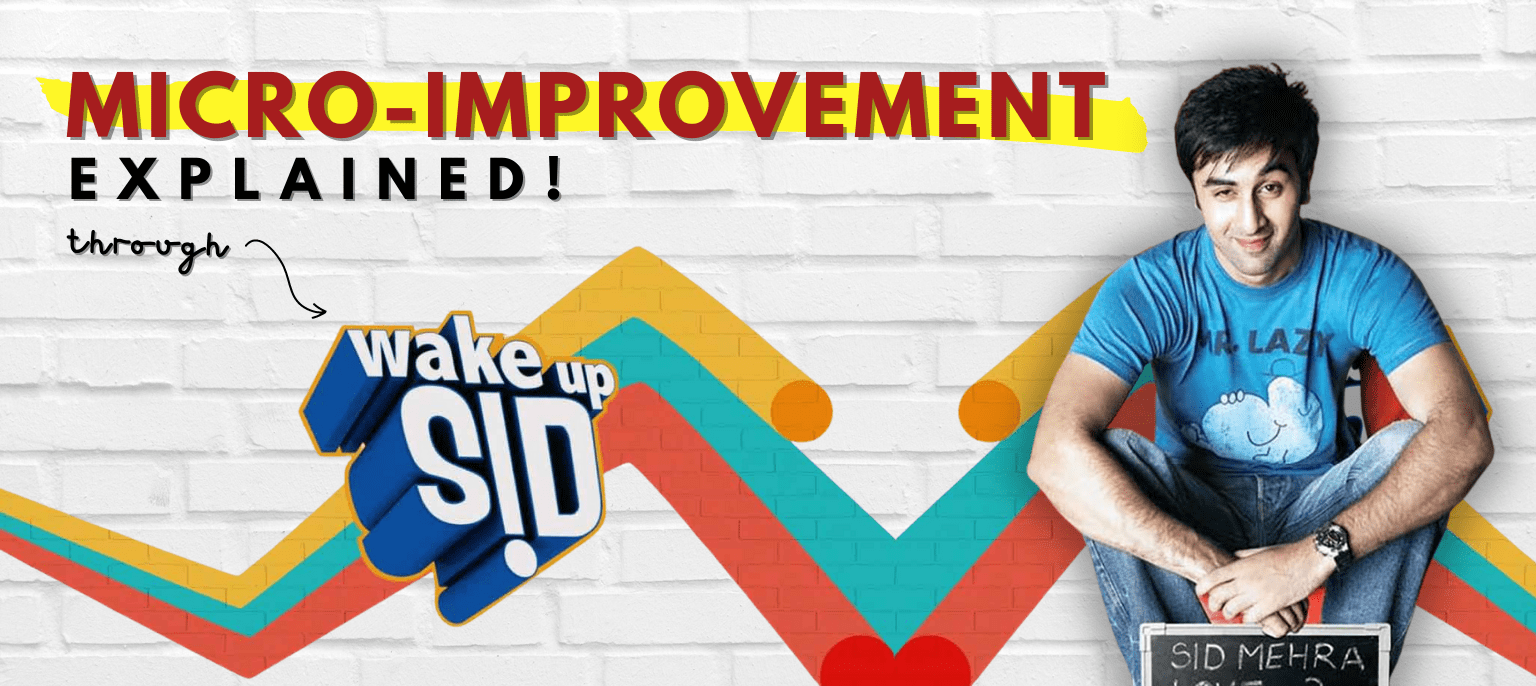
Micro-Improvement Explained Through Wake Up Sid
As the education ecosystem gears up to adopt the micro-improvement approach and create excellent learning environments across schools in India under the Vidya Amrit Mahotsav, we want to help the ecosystem build an understanding of the approach.
And we feel stories are the best route. Our first effort was a Coffee Table Book with 21 stories of micro-improvements led by school leaders from India and a few from outside the country. The second one is explaining the approach through some of the most loved stories.
What is better than the modern classic, coming-of-age drama Wake Up Sid, showcasing Sid’s (played by Ranbir Kapoor) journey from “Main apne dad ke paise kharch karta hoon (I spend my father’s money)” to “Mera pehla paycheck hai Pa, aapke lie (My first paycheck is for you, Father)”.
The micro-improvement approach caters to the objective of making the improvement process for an individual easy, simple, and achievable. Sid’s journey began when he left home after an argument with his father and arrived at his friend Aisha’s (played by Konkona Sen Sharma) house, dejected.
What did his micro-improvement journey look like? Let’s find out!

Step 1 – In absence of his household help Chotu, Sid cooks and cleans the house, learning the concept of accountability as a roommate



Step 2 – He gets a photography internship in Aisha’s office itself, getting to work for the first time in his life


Step 3 – Undertakes chores regularly with Aisha, helping her realise her dream of creating a dream home

Step 4 – Clicks pictures of a neighbour with her son, in turn understanding the value of relationships

Step 5 – Earns his first pay cheque

(Alongside, to his surprise, he is also offered the role of an assistant photographer in the team, leading to an revelatory, emotional reunion with his father)

Finally going back home a responsible man, one who doesn’t take anything or anyone for granted!

A journey that was energising (he found out what he was good at, was happy doing it), filled with micro steps, collaborative (almost everything would not have been possible without Aisha and others in the building or in the office – watch the film to find out more), relevant (we will all agree he needed to become better) and easy (well, may be not for him).
This is what the micro-improvement approach is – small steps to achieve a big goal!

Watch out for some of your other favourite stories in the coming days, let us know if you want us to pick a story to explain the approach.
Meet the Author

Luv Kumar
Having fallen in love with stories in his childhood, Luv makes his living as a storyteller. He strongly believes in the power of stories to make this world a better place. Luv currently manages communications at ShikshaLokam to drive collective action for enabling education leadership. He is a Teach for India Alum and has also worked with non profit education startups & media agencies in the past

Luv Kumar
Having fallen in love with stories in his childhood, Luv makes his living as a storyteller. He strongly believes in the power of stories to make this world a better place. Luv currently manages communications at ShikshaLokam to drive collective action for enabling education leadership. He is a Teach for India Alum and has also worked with non profit education startups & media agencies in the past
